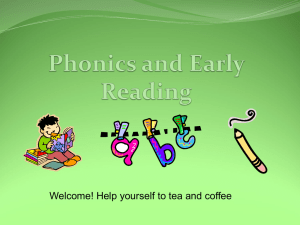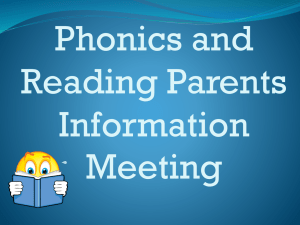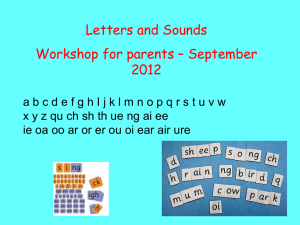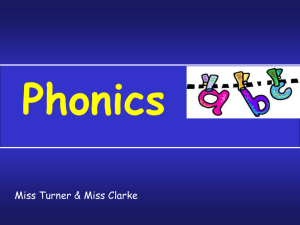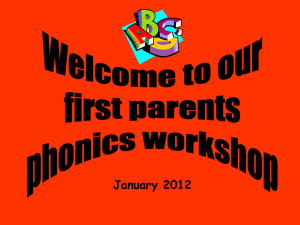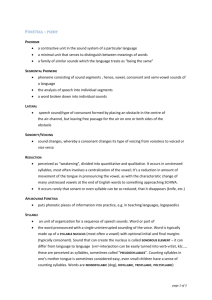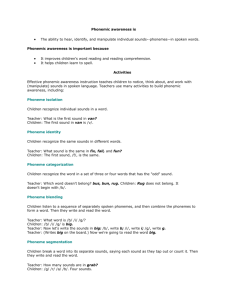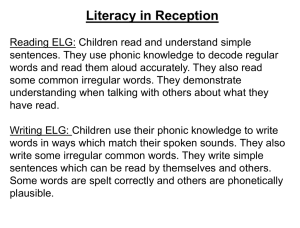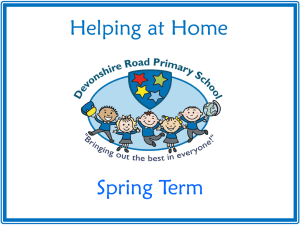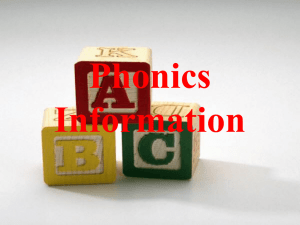Jolly Phonics
advertisement
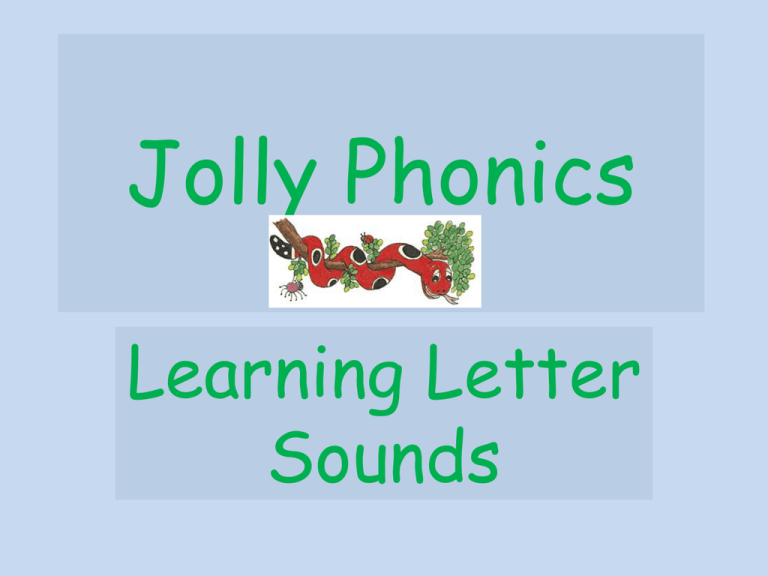
Jolly Phonics Learning Letter Sounds Introducing Letter Sounds In the UK 42 sounds : to be covered in about 9 weeks : one new letter sound per day. In Spain ? – One or two new letter sounds per week: 42 sounds to be covered in a school year? Teaching Steps Listening : The skill of listening is required for children to be better able to recognize sounds (phonemes) in words that they will be introduced to. Rhyming :As adults we recognize when words like /gate/, /eight/, /late/ rhyme. However, for a child this skill has to be practised before it becomes a natural process. Nursery rhymes and poems are an excellent way to introduce rhyming. Comparing & Contrasting Sounds of Rhyme :This is an important step that is often overlooked. By encouraging children to compare and spot the odd one out you are helping them fine tune their listening skills for later on when they will need to recognize patterns and phonemes in words. Awareness of Syllables : After a child becomes aware of words the next step is the awareness that words are divided into parts or beats we call syllables. An awareness of syllables will enable your child to perform phonemic segmentation (counting out the number of phonemes in a word). Phoneme Recognition :Phoneme Recognition (remember a phoneme is the name given to the smallest unit of sound in our English Language - of which there are approx. 42 sounds. is really an awareness that the words we are saying are made up of small sounds. For example the first phoneme in the word /cat/ is the /k/ sound. Phoneme Spelling : This involves becoming so familiar with phonemes (sounds) that a child will be able to manipulate words by adding and deleting phonemes at the beginning, middle and end of words to make new words. For example /r/at, can become /p/at or /s/at because the first phoneme has changed. Or /rat/ can become /rot/, /rut/ when the middle phoneme is changed - and /rat/ becomes /rap/, /ran/, /rag/ when the end phoneme is changed. Phase One (Nursery/Reception) Activities are divided into seven aspects, including environmental sounds, instrumental sounds, body sounds, rhythm and rhyme, alliteration, voice sounds and finally oral blending and segmenting Phase Two (Reception) up to 6 weeks Learning 19 letters of the alphabet and one sound for each. Blending sounds together to make words. Segmenting words into their separate sounds. Beginning to read simple captions. Phase Three (Reception) up to 12 weeks The remaining 7 letters of the alphabet, one sound for each. Graphemes such as ch, oo, th representing the remaining phonemes not covered by single letters. Reading captions, sentences and questions. On completion of this phase, children will have learnt the "simple code", i.e. one grapheme for each phoneme in the English language. Phase Four (Reception) 4 to 6 weeks No new grapheme-phoneme correspondences are taught in this phase. Children learn to blend and segment longer words with adjacent consonants, e.g. swim, clap, jump. Phase Five (Throughout Year 1) Now we move on to the "complex code". Children learn more graphemes for the phonemes which they already know, plus different ways of pronouncing the graphemes they already know. Phase Six (Throughout Year 2 and beyond) Working on spelling, including prefixes and suffixes, doubling and dropping letters etc. Activities Phonics Games http://www.familylearning.org.uk/phonics_games.html A collection of online, interactive games for practising phonics. Resources for Phonics : http://www.phonicsplay.co.uk/index.htm Resources for teachers and some games for children Classroom Games : (see PDF handouts.) A collection of games to play with children in class
